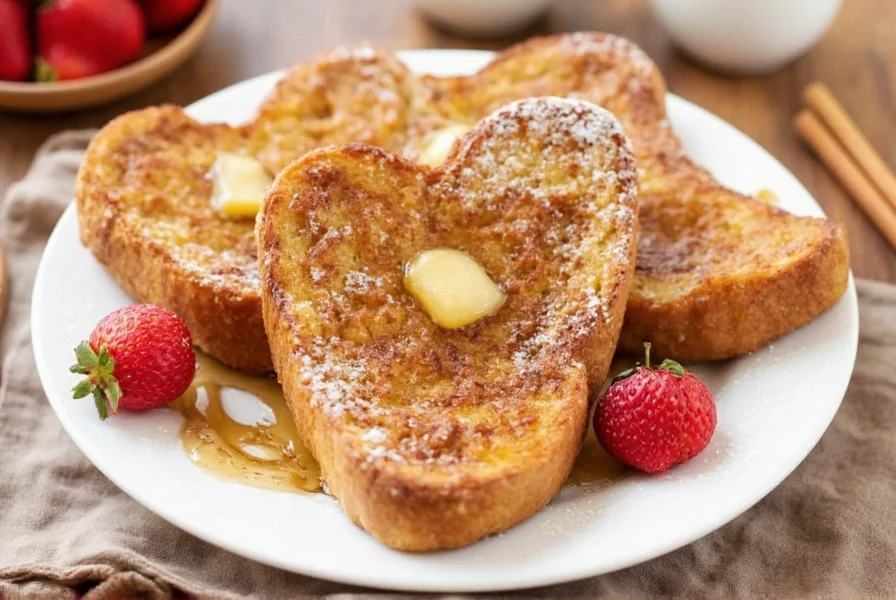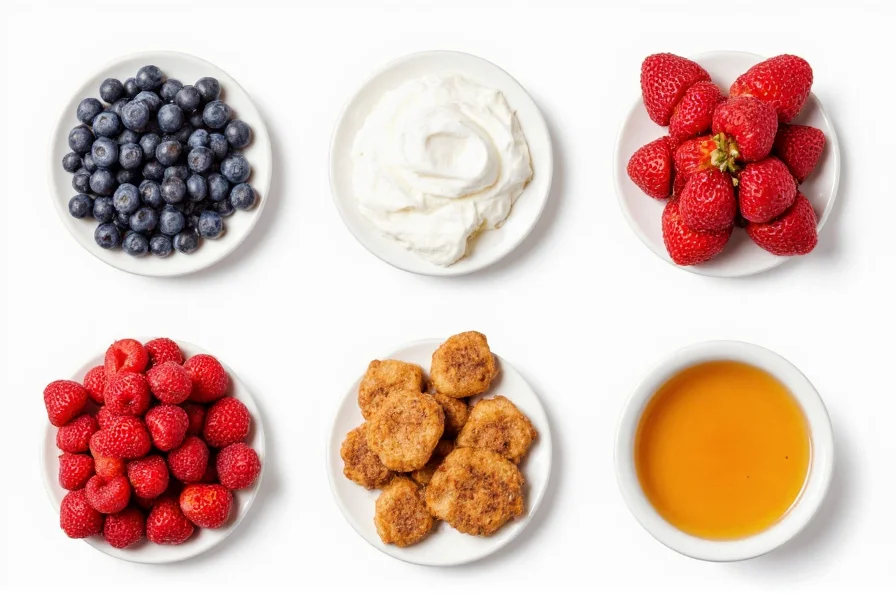Perfect cinnamon sugar french toast starts with understanding the science behind this beloved breakfast classic. When egg, milk, and vanilla soak into sturdy bread like brioche or challah, they create a custard that transforms during cooking. The Maillard reaction develops complex flavors while the cinnamon sugar coating caramelizes into a delicate crust. This guide reveals professional techniques for achieving restaurant-quality results at home.
The Essential Ingredients Breakdown
Quality ingredients form the foundation of exceptional french toast. While seemingly simple, each component plays a critical role in the final texture and flavor profile.
| Ingredient | Function | Professional Recommendation |
|---|---|---|
| Bread (1-inch slices) | Absorbs custard while maintaining structure | Day-old brioche or challah (not fresh) |
| Eggs (2 large) | Creates custard base and promotes browning | Room temperature for even mixing |
| Whole milk (1 cup) | Moisture and fat content for richness | Substitute half with heavy cream for luxury version |
| Cinnamon-sugar mix | Flavor and textural contrast | 4:1 ratio sugar to cinnamon, applied after cooking |
Mastering the Cooking Process
The difference between soggy disappointment and perfect cinnamon sugar french toast lies in technique. Many home cooks make the critical error of adding cinnamon directly to the custard mixture, which burns during cooking and creates bitter flavors. Instead, apply the cinnamon sugar coating after frying for optimal results.

Step-by-Step Preparation Guide
- Prepare the custard: Whisk 2 eggs, 1 cup whole milk, 2 tablespoons maple syrup, 1 teaspoon vanilla extract, and a pinch of salt until fully combined. Avoid overmixing.
- Soak the bread: Dip 1-inch thick bread slices for exactly 30 seconds per side. Over-soaking leads to structural collapse during cooking.
- Preheat your pan: Use a cast-iron skillet over medium heat (350°F/175°C). Test with a small bread piece - it should sizzle gently.
- Cook to perfection: Fry 3-4 minutes per side until deep golden brown. Press gently - it should spring back.
- Apply cinnamon sugar: While hot, dip both sides into a mixture of 1 cup sugar and 1/4 cup cinnamon. The residual heat melts the sugar slightly for adhesion.
Avoiding Common Cinnamon Sugar French Toast Mistakes
Even experienced cooks encounter pitfalls with this seemingly simple dish. Understanding these issues prevents breakfast disasters:
- Soggy centers: Caused by fresh bread (use day-old) or insufficient cooking temperature. The custard needs proper heat to set.
- Burnt coating: Adding cinnamon to the custard mixture causes burning. Always apply the cinnamon sugar after cooking.
- Inconsistent browning: Uneven pan temperature creates patchy results. Preheat your skillet thoroughly and wipe between batches.
- Sparse cinnamon coverage: The sugar mixture won't stick to cool toast. Work quickly while the french toast is still hot from the pan.
Creative Variations for Cinnamon Sugar French Toast
While classic preparation satisfies most cravings, these professional variations elevate your breakfast experience:
- Overnight cinnamon french toast bake: Layer soaked bread in a baking dish, refrigerate overnight, then bake at 350°F for 45 minutes. Ideal for meal prep.
- Stuffed cinnamon french toast: Sandwich cream cheese filling between slices before dipping. Creates a molten center when cooked properly.
- Apple cinnamon variation: Sauté thin apple slices in butter and cinnamon, then layer between french toast slices before the final sugar coating.
Serving and Storage Recommendations
For optimal enjoyment, serve cinnamon sugar french toast immediately after preparation. The sugar coating maintains its delicate crunch for approximately 15 minutes before beginning to dissolve. Pair with real maple syrup (not pancake syrup) and a pat of high-fat butter for authentic flavor.
Leftovers can be stored in an airtight container for up to 2 days. Reheat in a 350°F oven for 8-10 minutes to restore crispness - microwaving creates sogginess. Freezing is possible for up to 1 month; thaw overnight in refrigerator before reheating.

Frequently Asked Questions
What's the best bread for cinnamon sugar french toast?
Thick-cut brioche or challah provides the ideal structure for cinnamon sugar french toast. Their rich egg content complements the custard mixture, while their sturdy texture prevents disintegration during soaking. Avoid soft sandwich breads which become too soggy. Day-old bread works best as it has slightly dried out, allowing better custard absorption without structural collapse.
Why does my cinnamon sugar coating not stick properly?
Cinnamon sugar adheres best to hot french toast straight from the pan. The residual heat slightly melts the sugar, creating adhesion. If your coating isn't sticking, the toast has likely cooled too much before application. Work quickly after cooking, and ensure you're using the proper 4:1 sugar-to-cinnamon ratio. Avoid adding moisture-rich toppings like fresh fruit before applying the sugar mixture.
Can I make cinnamon sugar french toast ahead of time?
Yes, with proper technique. Prepare the soaked bread slices and refrigerate them on a parchment-lined tray (not touching) for up to 8 hours. Cook just before serving for best results. Alternatively, make a french toast casserole by layering soaked bread in a baking dish, refrigerating overnight, then baking at 350°F for 45-50 minutes. Add the cinnamon sugar coating during the last 5 minutes of baking for optimal texture.
What's the ideal cinnamon to sugar ratio for french toast?
The professional standard is 4 parts sugar to 1 part cinnamon (for example, 1 cup sugar to 1/4 cup cinnamon). This ratio provides balanced sweetness with pronounced cinnamon flavor without bitterness. Using too much cinnamon creates an overpowering, potentially bitter taste, while too little lacks distinctive flavor. Always mix the cinnamon thoroughly with sugar before application to ensure even distribution.
How do I prevent soggy cinnamon sugar french toast?
Prevent sogginess by using day-old bread, limiting soak time to 30 seconds per side, and cooking at proper temperature (350°F/175°C). Ensure your pan is sufficiently preheated - a drop of water should sizzle immediately. Don't overcrowd the pan, as this lowers the temperature. Cook until deeply golden (3-4 minutes per side) to allow the custard to fully set. Never cover cooked french toast, as trapped steam creates moisture.











 浙公网安备
33010002000092号
浙公网安备
33010002000092号 浙B2-20120091-4
浙B2-20120091-4